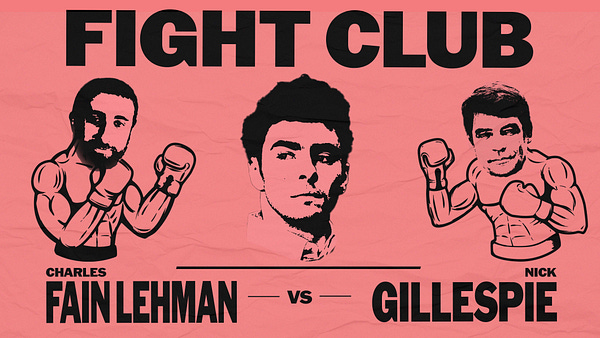
The Free Press

In the mid-1990s, my father, a gentle and kind man who loved being around people, began avoiding social contact, embarrassed by his inability to remember words and faces. He had been a brilliant physician until Alzheimer’s disease started eroding his brain. By the time my sister, mother, and I convinced him to get checked out, he couldn’t draw a clock with the numbers in the correct location, couldn’t be trusted to drive, and stared blankly at his neurologist when asked the name of the current U.S. president. (Though he delighted his politically aligned doctor by answering, after a long pause, “I don’t remember his name, but I do remember I don’t like him.”)
By 2003, my father got lost in familiar places, and was deeply depressed. It was that year, as a reporter for NPR, that I sat through the FDA hearing on a new Alzheimer’s drug, Namenda. From the data that were presented, I could see that it didn’t do much to help people suffering from the disease. At the same time, as is true for most Alzheimer’s families, I was desperate to latch on to anything that might keep my dad from slipping away. So when the drug was approved, my sister and I dutifully fed those useless pills to my father as he slowly forgot the last few decades of his life.
He died in 2006. “I can’t remember your name,” he’d say to visitors just before the end. “But I remember that I like you.”
Namenda, which blocks a brain neurotransmitter, is still on the market, along with another class of drugs that came out a few years before that stimulates a different neurotransmitter. Yet, as an AARP report put it in 2018, such drugs are unable to address “the underlying cause of the disease,” or “delay institutionalization, improve quality of life or lessen the burden on caregivers.”
Recently, you might have heard the news that all this may be changing. The two manufacturers of a drug called lecanemab, a twice-monthly intravenous infusion, are hoping the FDA gives them accelerated approval this week. A “consensus statement” signed by more than 200 Alzheimer’s researchers—many of whom have consulted for the companies—declared that lecanemab is a “foundational gamechanger.” Press reports have described the results of a clinical trial as “momentous,” a possible “triumphant turning point,” and perhaps the beginning of “a new era.”
That this drug is being heralded as a breakthrough is a statement on how miserable the state of Alzheimer’s research is.
At best, lecanemab might slightly slow a patient’s inevitable decline for a few months. As Dr. Ronald C. Petersen, director of the Mayo Clinic Alzheimer’s Disease Research Center, who found the results “pretty impressive,” said: “It was a modest clinical response—it didn’t stop the disease, it didn’t make anybody better, not that it was supposed to.”
In other words, more than a decade-and-a-half since my father’s death, the more than six million American families with a loved one with Alzheimer’s are facing exactly the same fate as mine. While treatments for diseases such as many cancers, some autoimmune disorders like multiple sclerosis, and HIV have undergone revolutions during this period, Alzheimer’s has defied all attempts at altering the course of this brain-robbing disease. The treatments that are always promised are still around a distant corner.
I have covered medical news for decades. I am a big believer in medicine’s triumphs—so was my dad. But why did medicine have nothing to offer my family and so many like ours?
I set out to discover why.
A Powerful Theory With No Proof
In 2019, the celebrated science writer Sharon Begley wrote a startling investigative story for the health and medicine publication STAT about why Alzheimer’s research was mired in decades of failure. She asserted this wasn’t just due to the complexity of the brain or the infernal nature of Alzheimer’s itself. There was another reason that had less to do with the nature of the disease, and more to do with the nature of research.
As she wrote:
“The most influential researchers have long believed so dogmatically in one theory of Alzheimer’s that they systematically thwarted alternative approaches. Several scientists described those who controlled the Alzheimer’s agenda as ‘a cabal.’ In more than two dozen interviews, scientists whose ideas fell outside the dogma recounted how, for decades, believers in the dominant hypothesis suppressed research on alternative ideas…This stifling of competing ideas, say a growing number of scholars, is a big reason why there is no treatment for Alzheimer’s.”
The story of this theory starts in 1906, when a German psychiatrist named Alois Alzheimer was studying the brain of a recently deceased woman with dramatic short-term memory loss. During the autopsy, Alzheimer saw dense plaques and tangles in her brain. Eventually, his finding set off decades of research into the nature and effect of those clogs.
In 1984, researchers from the University of California, San Diego, published one of the first reports on what those plaques were made of—a protein fragment called beta-amyloid. In 1987, Dr. Rachael Neve, then an assistant professor and molecular biologist at Boston Children’s Hospital, with colleagues, cloned the amyloid precursor protein gene, as did several other labs. Meanwhile, other scientists around the world were associating amyloid proteins with Alzheimer’s as well, characterizing the proteins, and finding genetic defects related to amyloid in people with an inherited form of the disease.
It looked pretty clear: the amyloid clumps must be causing the disease. So it would make sense that clearing this debris would return a brain to health.
But there was a problem with this theory. Some people with Alzheimer’s disease didn’t have discernible plaques. And some people had discernible plaques without symptoms of the disease. Neve herself didn’t believe that there was enough evidence to blame the plaques. And it turned out that once drugs were developed to clear the plaques, when they were given to patients in clinical trials, the patients didn’t improve.
Still, the amyloid believers persisted. Not just persisted. The goal of mitigating amyloid in the brain has held a vise-like grip on Alzheimer’s research for decades, despite the fact that, one by one, the drugs designed to address amyloid—around twenty of them— have shown virtually no beneficial effects on patients.
Too Big to Succeed
One way to understand the persistence of the amyloid theory is to look at the incentives of big academic medicine, big governmental medicine, and big pharma. For decades, time, effort, and money have been sunk into this single hypothesis. If we just make the right intervention in the process of amyloid being deposited in the brain, the logic goes, Alzheimer’s can be beaten.
Acknowledging that this theory may be a dead end would mean entire careers and billions of dollars have all been devoted to the wrong idea. Not only that—there is no clear path to the right one.
Dr. Dennis Selkoe, Professor of Neurologic Diseases at Harvard Medical School, is among the most prominent supporters of the amyloid hypothesis. He’s not happy about accusations of a cabal. “It's my opinion that there was never any kind of organized or even semi-organized or concerted effort to delegate any aspect of Alzheimer’s research to an inferior position and heighten amyloid studies,” he told me. “Like everything in science and the world, it was a competition of ideas.” He says some of his own amyloid grants have been rejected, and journals have turned down some of his papers. “That's just part of academic research.”
For many years the powers-that-be within the neuroscience community—researchers who sit on the committees that determine who gets financial support from the government and research organizations, and who review research papers for medical journals to determine what should be published—supported the amyloid hypothesis to the virtual exclusion of any others. As Sharon Begley described it, amyloid proponents “influenced what studies got published in top journals, which scientists got funded, who got tenure, and who got speaking slots at reputation-buffing scientific conferences.”
All it takes is one member of a granting committee (typically, they have a dozen members) or one of the usual three or so reviewers of a research article to kill a project. Cabal or not—and while I think there’s groupthink going on, I don’t think amyloid proponents are engaging in a “conspiracy” —the frustration of the suppressed scientists was and is palpable, and has sent some talented researchers to other fields.
Rachael Neve is one.
Neve says her contact for grants at the National Institutes of Health told her she’d have a better chance of getting her research funded if she included someone who was an advocate of the amyloid hypothesis on her proposals. She was, at the time, finding indications that non-amyloid parts of the protein she and others had identified were killing brain cells on their own. She repeatedly saw research articles by herself and others get rejected by top-tier scientific journals. “It was dispiriting to see beautiful papers that proposed alternatives to the amyloid hypothesis relegated to second and third echelon journals again and again,” she wrote me in an e-mail.
Neve eventually left the Alzheimer’s field because she was disillusioned by the heavy focus on amyloids. “The amyloid hypothesis is one of the most tragic stories in modern biomedical research,” Neve wrote to me in an email. “The field of Alzhiemer’s disease research has effectively been at a standstill because of that.”
Nobel laureate Dr. Thomas C. Südhof, a professor of molecular and cellular physiology at Stanford Medicine, says medical journals are particularly to blame. Publications in scientific journals, preferably prestigious ones, are make-or-break for scientists’ careers. But the experts who get to decide what is published have a personal incentive not to encourage findings that might run counter to their own beliefs..
Südhof, who is a consultant to several companies working on drugs for Alzheimer’s, says too often a reviewer or two will scotch a good paper because it doesn’t support a causative role for an amyloid. “The sociology of science is set up so that people do research that will get published, and that will get grants,” he told me. Südhof thinks the focus on finding a drug to stop the disease, without first understanding better the processes that cause Alzheimer’s, has set back progress. “The science of Alzheimer’s disease vastly overfocused for decades on amyloid. Instead of really looking at the basic fundamental biology, they just looked at more clinically oriented work,” he says. “And as a result, not much has come out of this.”
Dr. Daniel Alkon ran a neuroscience lab at NIH for 30 years. He told me that, in his decades at the NIH, he saw the same kind of pressure Neve and Südhof did, including the challenges of publishing in scientific journals. He himself doesn’t think amyloids alone, in the concentrations in which they are found in patients, are enough to be the sole cause of the disease. Still, he says, “For a long time, the amyloid hypothesis was conventional wisdom, so much so that other innovative approaches were discouraged in terms of grants awarded and articles published in high-profile journals.”
“The exclusive focus has hurt,” he told me. “It pushes out other ways of thinking about the disease, and for that reason discourages innovation.” Alkon himself has another way of thinking about Alzheimer’s. He believes that symptoms come from the loss of synapses—the connections between neurons that allow them to communicate with each other.
Alkon moved on from the NIH when he was recruited by the Rockefeller family to start a neurosciences institute. Today, he is president and chief science officer of the biotech firm Synaptogenix, which is seeking cures for Alzheimer’s and other conditions that damage cognitive function. Over the years he has encountered many amyloid champions at drug companies. “Unless I could show that what we were doing also reduced the amyloid, they were decidedly less interested in funding,” he says.
Drug companies have powerful motivations to stick with the amyloid hypothesis even as it has repeatedly disappointed, Alkon says. Drug development costs hundreds of millions of dollars. If executives were to authorize a non-amyloid treatment that failed, the attempt would be hard to justify. However, if they stick with the theory promoted by leading academics, another failure doesn’t look that bad.
But as Nobel Prize-winning physicist Richard Feynman once said, “Reality must take precedence over public relations, for nature cannot be fooled.”
Drugs to Help Shareholders
There’s a tragic human cost to drug companies’ conservatism. Like me, Rachael Neve had a parent with Alzheimer’s. “I believe that my mother, who was diagnosed with Alzheimer’s disease and who recently died after years of suffering, might have had a fighting chance if alternate hypotheses had been funded and published, spurring biotech companies to put resources into more than ‘clearing amyloid,’” she wrote to me.
After so many years of defeat, the criteria for “success” in Alzheimer’s treatment has become so circumscribed that drugs are brought to market—like the one taken by my father—that everyone knows do little to nothing, cost money, and often have side effects. We are at a point where it appears the only potential beneficiaries of these pharmaceuticals are drug-company shareholders.
Take the FDA’s approval, last June, for the drug aducanumab, which has become a scandal. Clinical trials in patients with mild Alzheimer’s disease taking aducanumab—a lab-made antibody designed to chew up amyloid plaques—was halted by its manufacturers when it failed to benefit patients. When the manufacturers, American biotech company Biogen and Japanese biotech Eisai, parsed the data, they found that aducanumab somewhat lowered amyloid levels. So, on that basis, Biogen sought approval for aducanumab because the company could show the drug fit the failing amyloid theory, even as it did nothing for patients.
The strategy faced a major hurdle. Ten of the 11 members of an FDA advisory committee, noting there was not enough evidence to say that the drug slowed cognitive decline, voted against its approval. Then, to push the drug through the process, FDA leadership switched the criterion for approval to demonstrating a reduction in amyloid deposits. The agency then okayed what came to be marketed as Aduhelm, calling it in a press release “the first therapy that targets the fundamental pathophysiology of the disease.” At that point, three appalled members of the advisory committee quit.
Harvard Medical School professor Aaron Kesselheim, one of the departing advisory committee members, told the acting FDA commissioner in his resignation letter that the agency’s nod to aducanumab was “probably the worst drug approval decision in recent U.S. history.”
In late December, a damning congressional investigation into Aduhelm found that the interactions between the FDA and Biogen were “atypical” and that the regulator and the drug manufacturer “inappropriately collaborated” during the process. It published documents from Biogen showing the company priced the intravenous drug at a staggering $56,000 per patient per year in order to “make history” with a “blockbuster” drug launch. It would have been historic indeed, as the investigation shows. Picking up that tab for Aduhelm would have been ruinous both for the budget of Medicare and for many individual patients forced to cover the co-pay.
Aduhelm has now essentially been sidelined, not only because of cost and ineffectiveness, but also for its frequent side effects of brain swelling and bleeding.
A New Era?
All this brings us back to Biogen and Eisai’s new drug, lecanemab—the “gamechanger” amyloid treatment scheduled for possible accelerated approval by the FDA soon. If it comes to market, some analysts predict it could surpass $9 billion a year in sales.
Biogen touted the “highly statistically significant reduction of clinical decline” in a press release at the end of September. So let me explain what a “gamechanger” for Alzheimer’s looks like. For the trial, nearly 1,800 people diagnosed with Alzheimer’s were divided in half, with one group getting lecanemab, the other a placebo.
These patients were then evaluated for their ability to perform activities of daily living, such as feeding and dressing themselves. Their cognitive function, such as the ability to identify common objects and be socially appropriate, was also assessed. In the lecanemab group, the drug slowed cognitive decline among patients by 0.45 points on an 18-point scale. You read that right—less than a one-point improvement in evaluations of patients’ memory, judgment, ability to care for themselves, and other measures. And that’s a slowing of deterioration, not a reversal.
In addition, three patients in the clinical trial are known to have died from bleeding and swelling of the brain that is believed to be a result of the treatment. As an article in Science notes, brain swelling is a well-documented side-effect of medications that attack amyloid.
There have been mixed reactions to lecanemab in the Alzheimer’s research community. Harvard’s Dennis Selkoe, one of the major promoters of the amyloid hypothesis, is thrilled. He notes of the drug’s results that the longer the patients were on it, the greater the slowing of degeneration. Selkoe, who has done consulting for Eisai, said for most patients the side effects were generally mild and manageable. “Collectively, these results prove the amyloid hypothesis is scientifically correct,” he wrote in an email. For him, this provides vindication for the belief that addressing amyloid is key to Alzheimer’s prevention and cure. “Indeed, greater focus might have enabled the field to achieve this breakthrough for patients earlier than now,” he says.
In The BMJ Rob Howard, a geriatric psychiatrist at University College London, observed of the results that, “this is just too small a difference to be noticed in an individual patient, and none of the reported results … reached accepted levels of improvement to constitute a clinically meaningful effect.” But he, and others, did note that the slowing of degeneration gave credence to the amyloid hypothesis—Howard called it “a believable path.”
The anti-amyloid crowd isn’t impressed. Neuroscientist Daniel Alkon, formerly of the NIH, says of patients who took lecanemab: “They are still declining. That’s not what we should be aiming for. After 20 years of failed trials, I think it’s reasonable to argue that it’s time to try to find a therapeutic approach that makes patients better rather than just slowing down the progression.”
There is also concern that even a marginally useful amyloid drug could end up diverting precious resources back into amyloid and away from other possible treatment avenues. Eleanor Drummond, an Alzheimer’s researcher at Australia's University of Sydney told WIRED, she felt trepidation at that prospect. “In the past, all the funding eggs have been in the amyloid basket. We don’t want that to happen again.”
And lecanemab isn’t the only amyloid drug in line for accelerated approval. Eli Lilly just got such priority treatment for its drug donanemab, now in clinical trials.
Enough False Hope
Even though there are today a number of non-amyloid approaches to treating Alzheimer’s being tried, the disease continues to frustrate and confound. A clinical trial by Alkon’s firm Synaptogenix has been testing a drug that restores brain synapses. But patients have failed to show improvement after 28 weeks on the drug.
Other approaches under investigation include anti-herpes drug trials, because there is some evidence to suggest that herpes simplex virus type 1 might be involved in the onset of Alzheimer’s. Antibacterials are being tried, based on the possibility that chronic inflammation from infection might be a precipitator. And some clinicians are suggesting that we have to stop looking for one solution and start considering a “cocktail” of drugs, a technique that has been so successful with some cancers.
Sharon Begley, who wrote in 2019 of the singular focus on amyloid, didn’t live to do a follow up to her Alzheimer’s story. She died of lung cancer at age 64 years old in January of 2021.
And if my father were diagnosed today, 17 years after his death, there still would be nothing to stop or reverse the course of his illness.
But at least the Alzheimer’s research community has begun to recognize they must pursue multiple paths of unraveling this disease. Maybe a new discovery will one day bring real hope. We’ve had enough of the false kind.
This subject is one that affects so many Americans. Including our own Peter Savodnik. (Read his moving, beautiful essay about losing his dad to Alzheimer’s.)
We wonder if people in your families have suffered from this disease and if Joanne Silberner’s reporting resonates with your experience. We’d love to hear from you in the comments.
And if you appreciate our reporting please subscribe today:
















FWIW
1. There are numerous studies that show omega fatty acids and MCT's slow cognitive decline significantly in canine patients (short lifespans and big litters allow much "quicker" studies in dogs).
2 Both my wife and a good friend had severe cognitive side effects after taking ezetimibe that resolved weeks after stopping the medications.
My old veterinarian brain strongly suspects there is a link between lipids and development of Alzheimer's based on those two points. While inflammation certainly leads to amyloid and is involved in many degenerative diseases in the body (Ken Johnson was one of my pathology professors in vet school), it is certainly more than amyloid in the brain, and lipids has to be an important clue.
Ken did his work in 1986, and we have known about lipids helping dogs for decades now. It is tragic that there likely very important clues have been overlooked in the pursuit of... Money? Fame? Validation?
Certainly not in pursuit of science!
I have lost two brothers to Alzheimer's so this is not an academic exercise to me. I agree that the assumption of amyloid being the single problem has wasted time and starved competing avenues of research. There have been others like Dr. Dale Bredesen that have for a long time has advocated other research. Does he have the right answer? Hard to tell because funding outside of plaques is hard to come by. I don't see the problem as an accidental selfish emperor that once replaced the system will heal. There is only one approach because there is only one major source of funding, the federal government. We have a monopoly by design and that determines how much of our health care is run. That a monopoly might be myopic should not come as a surprise. Sixty years ago the US medical system was more decentralized and considerably less monopolistic.